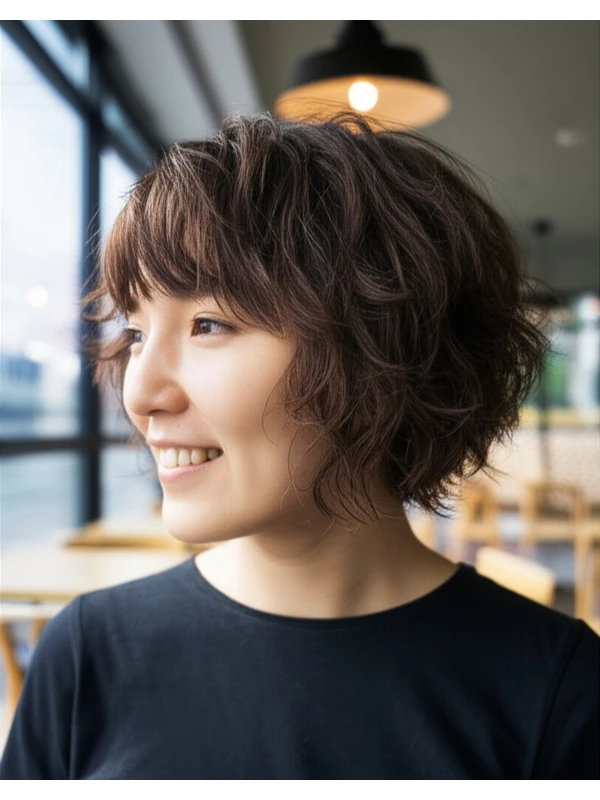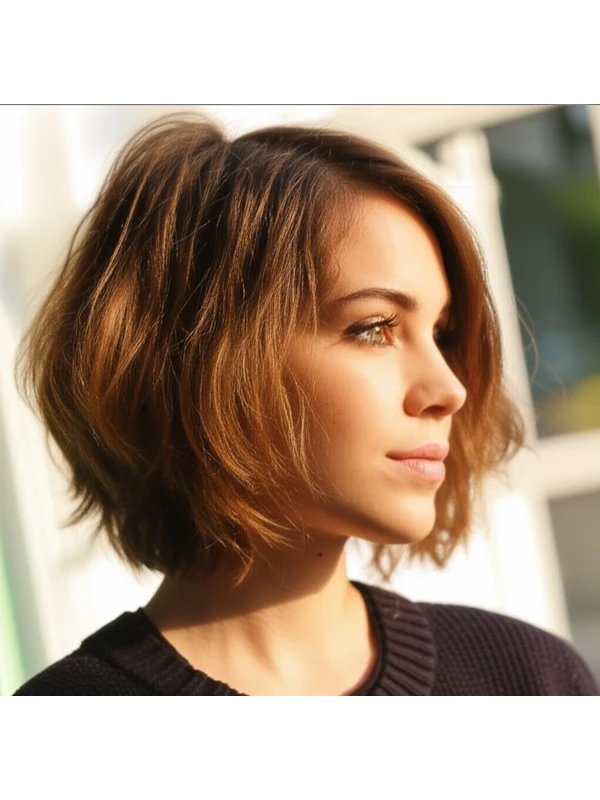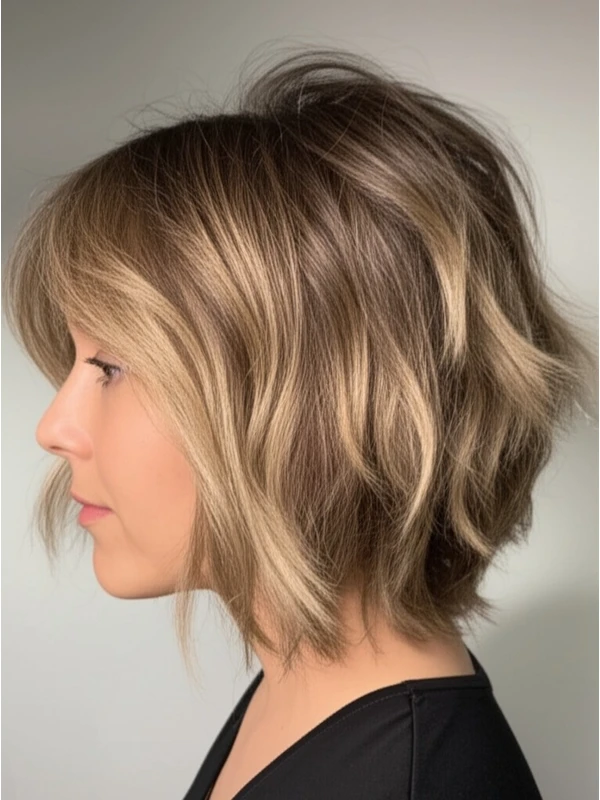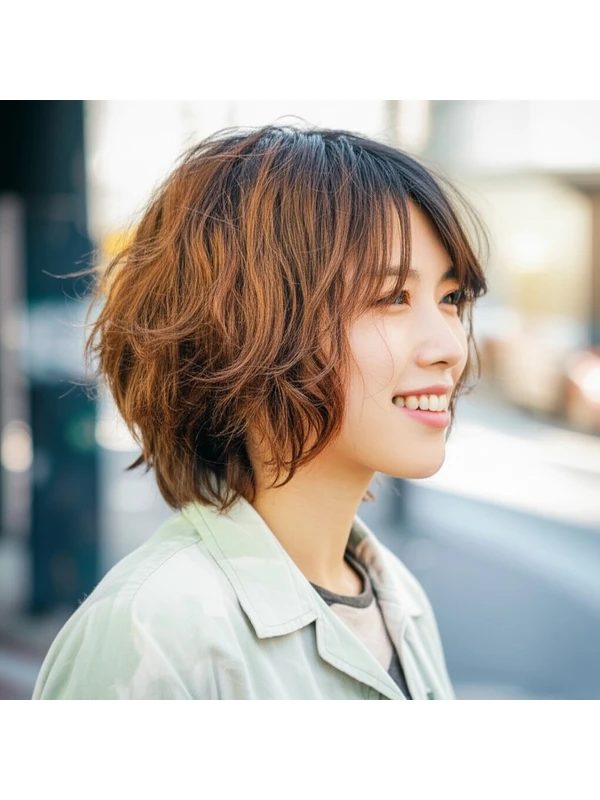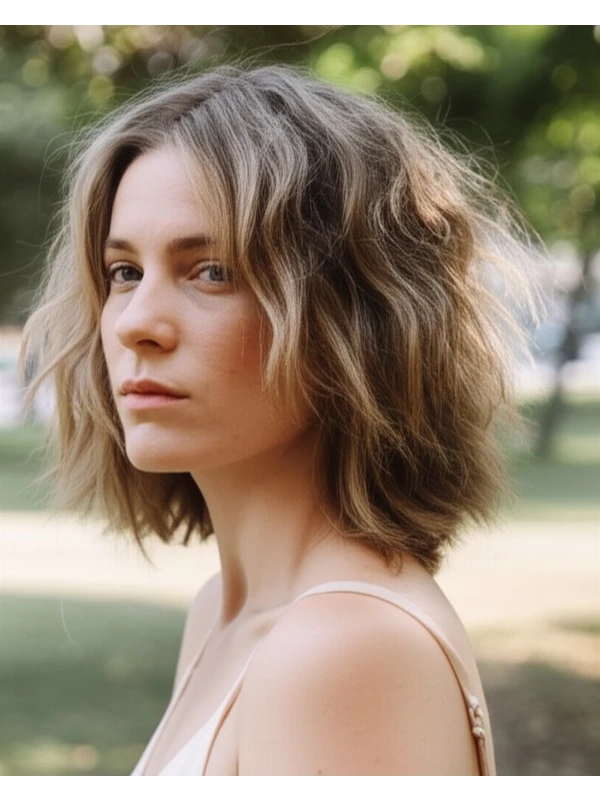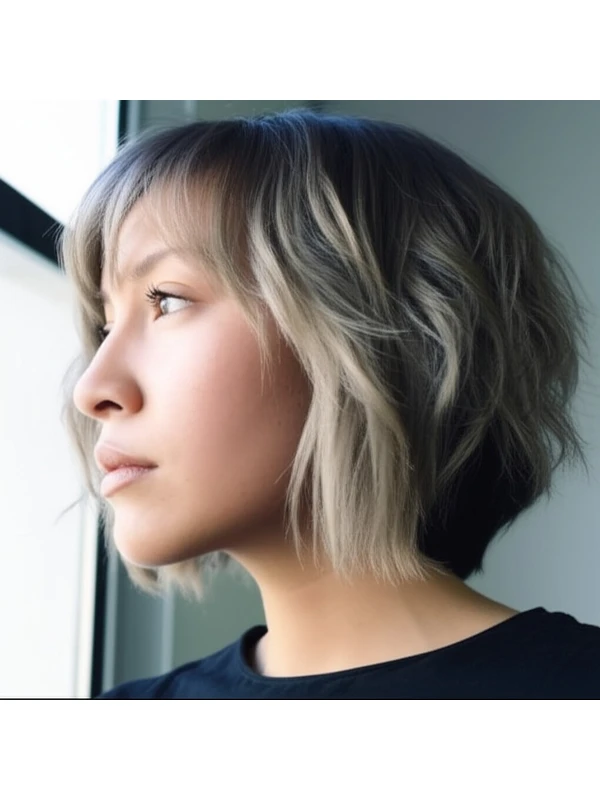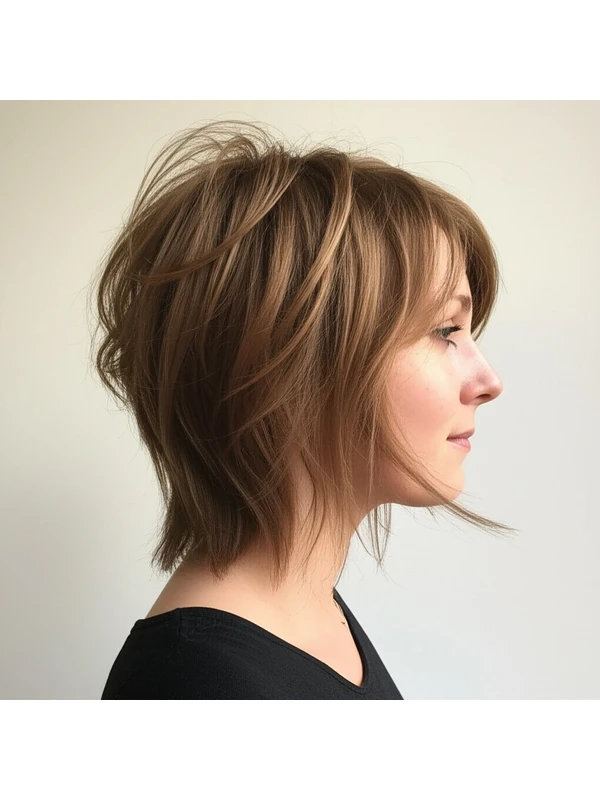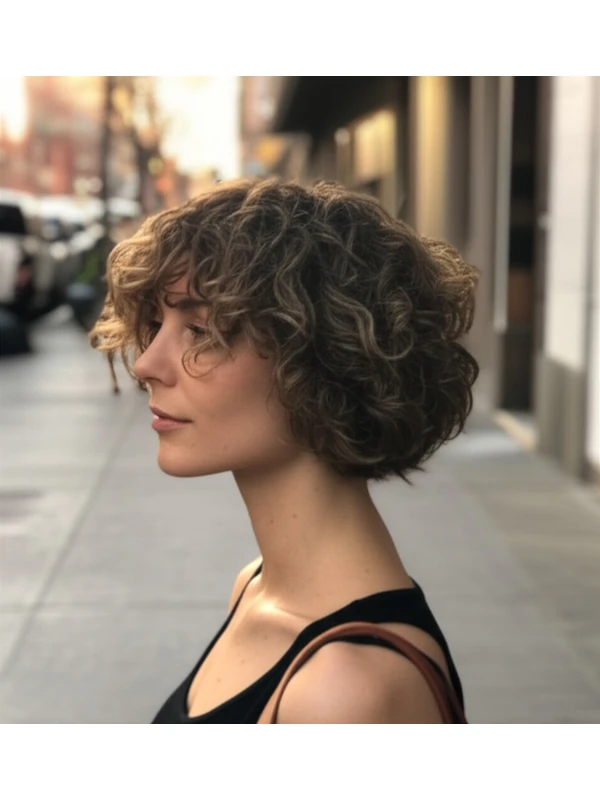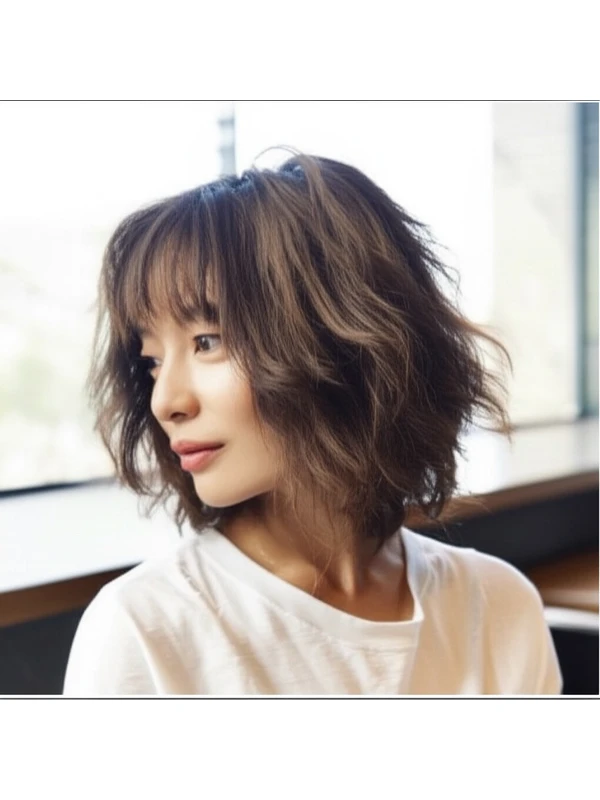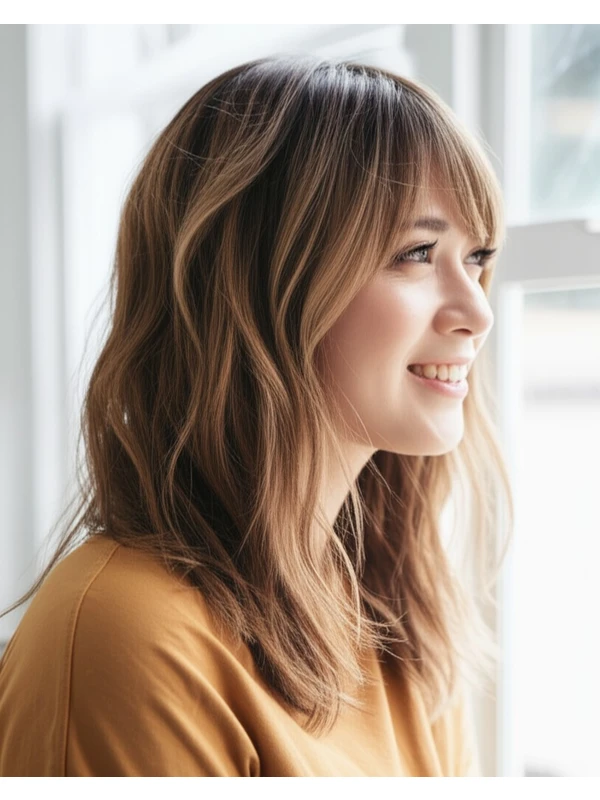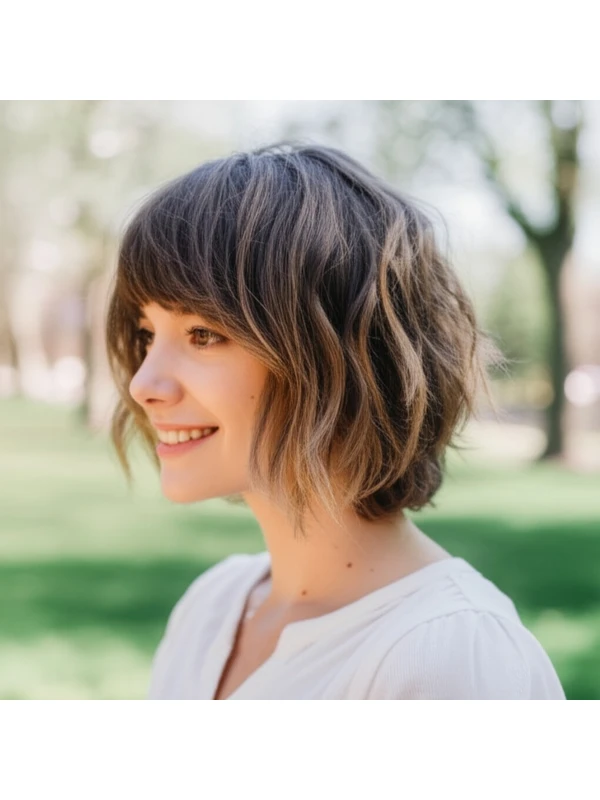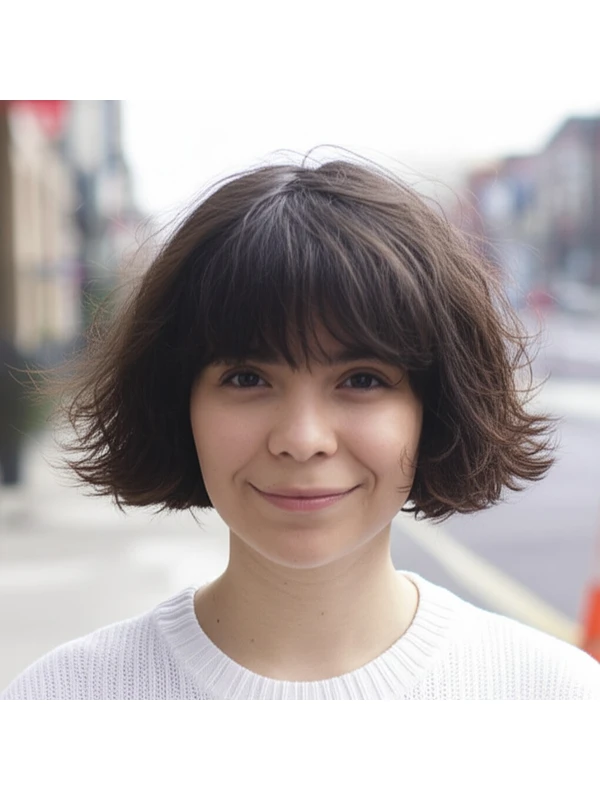#The Modern Shag: Effortless Cool for Every Face & Hair Type
The shag haircut is back – but it’s not your mom's 70s version! This modern take on the classic offers a cool, effortless vibe with tons of versatility. Let's break down everything you need to know about rocking this iconic style.
#1) Background & Definition: What Is a Modern Shag?
The shag haircut is all about layers – lots and lots of them! Think choppy ends, face-framing pieces, and an overall tousled texture. It’s designed to create movement and volume without feeling overly structured. The “modern” part means it's been updated with softer lines than the original, often incorporating more subtle graduation (a gradual decrease in length) and a less severe fringe option.
- Cut Geometry: The shag is built on a foundation of graduated layers that start higher up near the crown and cascade down towards the ends. The shortest layers are typically around the face to create lift and definition.
- Key Features: Choppy texture, lots of layers, face-framing pieces, often a fringe (but not always!), overall effortless vibe.
- Typical Length Ranges: Can range from chin length ("shag bob") to collarbone length or even longer! The key is the layering – it works at any length.
- Alternative Names: Layered shag, textured shag, modern layered cut.
#2) Face Shape Fit: Finding Your Shag Sweet Spot
The beauty of the modern shag is its adaptability. However, certain variations work best with different face shapes.
- Oval: Lucky you! Oval faces are generally considered the most balanced and can pull off almost any shag variation – long shags, short bobs, with or without a fringe.
- Round: A longer shag that hits below the chin helps elongate the face. Avoid blunt cuts around the cheeks; opt for layers that start higher up to add height. A side-swept fringe softens roundness.
- Square: Soften those angles! Layers are your best friend here. Face-framing pieces and a wispy, textured fringe will help balance a strong jawline. Avoid blunt bangs or overly structured cuts.
- Heart: A shag with face-framing layers that draw attention to the eyes is flattering for heart shapes. A side part adds asymmetry and balances a wider forehead. Longer lengths work well.
- Diamond: Shags can soften diamond faces by adding volume around the cheekbones and jawline. A fringe (either blunt or wispy) helps balance a narrower chin.
- Oblong: Add width with layers that are fuller at the sides, especially near the cheeks and jawline. Avoid very long, sleek shags as they will only elongate the face further. A full, textured fringe can also help.
#3) Body Proportions & Height Guidance: Styling for Your Silhouette
The shag's impact isn’t just about your face; it affects how you appear overall.
- Petite: Shorter to medium-length shags work best. Too much length can overwhelm a smaller frame. Focus on layers that add volume at the crown, creating the illusion of height.
- Average Height: Most shag lengths will suit an average build. Play with layering and fringe options based on your face shape.
- Tall: Longer shags (collarbone to shoulder-length) are gorgeous for taller individuals. The length adds balance and prevents a towering look.
- Narrow Shoulders: Create the illusion of broader shoulders with layers that start lower down, adding volume at the sides.
- Broad Shoulders: Avoid overly voluminous styles around the shoulders. Keep layering more focused on the face and crown to draw attention upwards.
- Short Neck: Shorter shags or those with a shorter fringe can make a short neck appear longer.
#4) Works Best With Hair Types & Densities: Layering for Every Texture
The shag isn’t exclusive! It adapts beautifully to various hair types and densities.
- Straight Hair: The shag creates incredible movement and texture on straight hair. Styling is relatively easy with a texturizing product.
- Wavy Hair: Shags enhance natural waves, creating a more defined and piece-y look. Embrace the air-dry!
- Curly/Coily Hair: A shag can add definition to curls and coils while reducing bulk. Crucially, consider shrinkage! A shag that looks shoulder-length dry might be much shorter when fully hydrated. Work with a stylist experienced in cutting curly textures.
- Fine Hair: The layers create the illusion of fullness, making fine hair appear thicker. Avoid overly long, one-length styles which can emphasize thinness.
- Medium Hair: The shag is perfect for medium density – it adds texture and dimension without being overwhelming.
- Thick Hair: Layers are essential to remove weight and prevent a bulky look. Shorter layers around the face will lift and frame beautifully.
Shrinkage Note (Curls/Coils): Expect significant shrinkage! Communicate your desired length after styling with your stylist, not based on dry hair measurements.
#5) Styling Variations: From Casual to Chic
The shag is a chameleon – it can be dressed up or down.
- Sleek vs. Textured: For a sleek look, use smoothing serums and blow-dry with a round brush. For texture, air-dry or diffuse with a diffuser.
- Middle vs. Side Part: A middle part creates symmetry; a side part adds softness and volume.
- Fringe Variations: Blunt bangs, wispy bangs, curtain bangs (longer and parted in the middle), no fringe – all work!
- Occasion Styling:
- Casual: Air-dry with texturizing spray.
- Office: Sleek blow dry with a side part.
- Evening: Add waves with a curling iron or hot rollers, and finish with hairspray for hold.
#6) Maintenance: Keeping Your Shag Sharp
- Trim Cadence: Every 6-8 weeks to maintain shape and prevent the layers from blending together.
- At-Home Routine: Focus on moisturizing (especially important for curly/coily textures).
- Heat vs. Air-Dry: Air-drying is ideal for enhancing natural texture, but a diffuser can speed up the process and reduce frizz. If using heat, always use a protectant spray.
- Product Checklist:
- Shampoo & Conditioner (suited to your hair type)
- Leave-in Conditioner (especially important for dry or curly/coily hair)
- Texturizing Spray or Mousse (for volume and definition)
- Finishing Serum or Oil (to tame frizz and add shine)
- Estimated Daily Styling Time: 10-30 minutes, depending on your desired style.
#7) Grow-Out Roadmap: The Evolution of Your Shag
- Months 1-3: The shag will look fresh and defined. Regular trims are crucial to maintain the shape.
- Months 4-6: Layers may start to blend together slightly, but it should still retain its overall vibe. Talk with your stylist about adjusting layering as needed.
- Maintaining Shape: Between cuts, focus on styling techniques that enhance texture and volume.
#8) Color Pairings: Enhancing the Dimension
The shag’s layers are a canvas for color!
- Shades That Elevate: Balayage or babylights add dimension and movement. Rooted looks also work beautifully to accentuate the layers.
- Cool Undertones: Ashy blondes, cool browns, silver tones.
- Warm Undertones: Honey blondes, caramel browns, copper highlights.
- Low-Commitment Options: Face-framing highlights or a root shadow can add subtle dimension without a full color change.
#9) Season & Occasion Guide: Styling for Every Moment
- Spring/Summer: Embrace the air-dried look! Use lighter products to avoid weighing down hair.
- Fall/Winter: Add warmth with richer tones and use moisturizing products to combat dryness.
- Work: A polished, sleek shag is professional and stylish.
- Weddings: Soft waves or curls add a romantic touch.
- Parties: Experiment with bold accessories and playful styling techniques.
#10) Cost & Time: What to Expect at the Salon
- Salon Time: Typically 1-2 hours, depending on complexity and stylist experience.
- Estimated Price Range: Moderate to higher than a basic haircut; expect slightly more due to the precision layering involved.
#11) Pros & Cons: The Shag Reality Check
Pros: Versatile, flattering for many face shapes, adds volume and texture, effortless cool vibe. Cons: Requires regular trims, styling can take time (depending on desired look), may not be ideal for extremely fine or very thick hair without careful layering.
#12) Salon Consultation Script: Your Checklist
Here are some prompts to help you communicate your vision to your stylist:
- "I'm interested in a modern shag haircut. Can we discuss what that would look like on my face shape?"
- “I’d like layers, but I’m not sure how short to go.”
- "What fringe options would work best with my features?”
- "My hair tends to [air dry wavy/curly/straight]. How will the shag interact with that?"
- "How much time do you think styling this cut will take me daily?"
- “Can we discuss color options to enhance the layers and dimension of the shag?”
FAQs: Your Shag Questions Answered
- Is a shag haircut hard to style? It depends! A more textured, air-dried look is easy. A sleek, polished shag requires more effort.
- Can I get a shag with short hair? Absolutely! Shag bobs are very popular and chic.
- Will a shag make my hair look thinner? If layered correctly, it can create the illusion of fullness on fine hair. However, overly choppy layers can emphasize thinness if not done carefully.
- Can I wear glasses with a shag? Yes! Adjusting the fringe length and style can accommodate glasses frames.
- How do I prevent my shag from looking messy? Regular trims are key! Also, use styling products to control frizz and define layers.
- Is a shag suitable for all ages? Absolutely! The modern shag is timeless and can be adapted to suit any age group with adjustments in length and layering.
